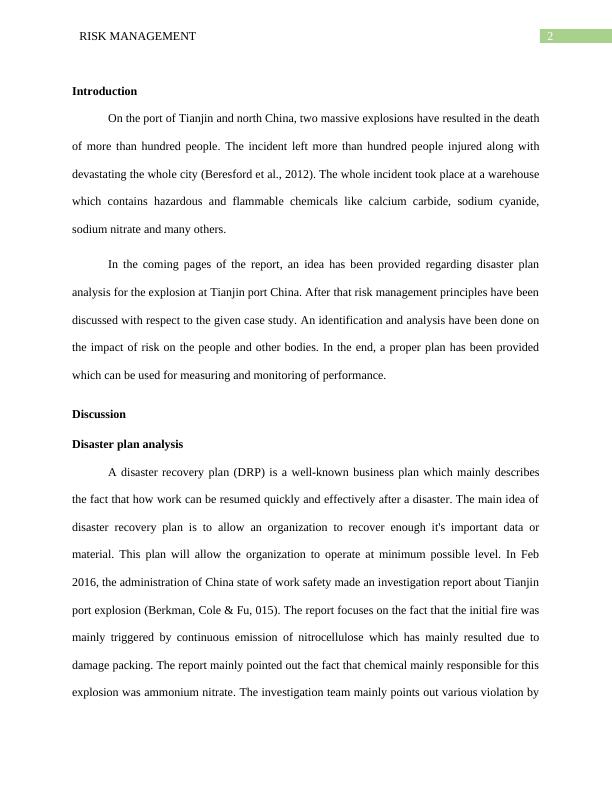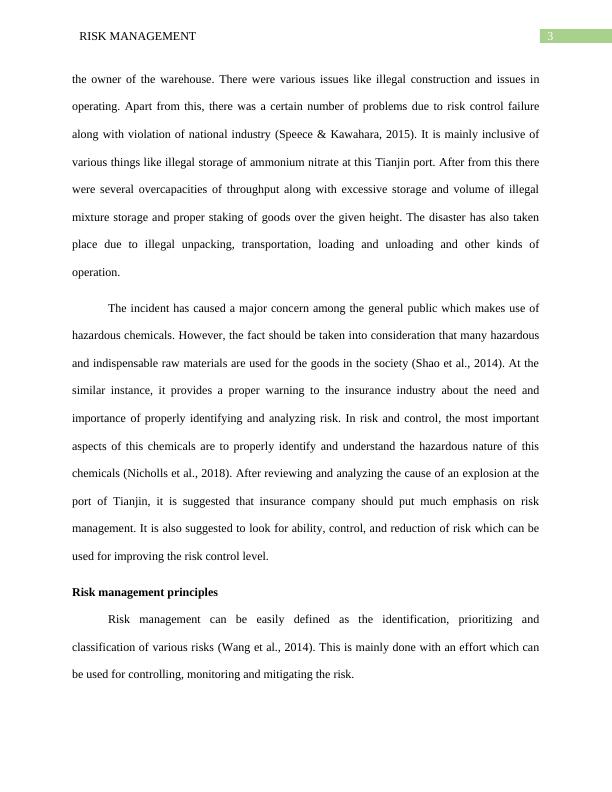Risk Management Plan for Tianjin Port Blast
Complete a disaster analysis report using the principles of risk management, focusing on the Tianjin China explosion of 13 August 2015.
14 Pages2673 Words390 Views
Added on 2023-06-10
About This Document
This report provides a risk management plan for Tianjin port blast. It includes disaster plan analysis, risk management principles, identification of hazard and potential loss, estimation of consequences, estimation of likelihood, measure and rank risk, and risk management plan.
Risk Management Plan for Tianjin Port Blast
Complete a disaster analysis report using the principles of risk management, focusing on the Tianjin China explosion of 13 August 2015.
Added on 2023-06-10
ShareRelated Documents
End of preview
Want to access all the pages? Upload your documents or become a member.
Risk Management Plan for Tianjin Port: Principles and Implementation
|15
|2832
|402
Tianjin Port Incident: Risk Management Plan and Damage Analysis
|10
|2199
|136
Tianjin China Explosion Incident Risk Analysis
|14
|2843
|281
Tianjin China Explosion Incident Risk Analysis
|14
|2980
|52
Engineering Risk Management: Lessons from the Tianjin China Explosion
|11
|2520
|379
MGMT6019– Engineering Risk Management
|13
|2537
|93




